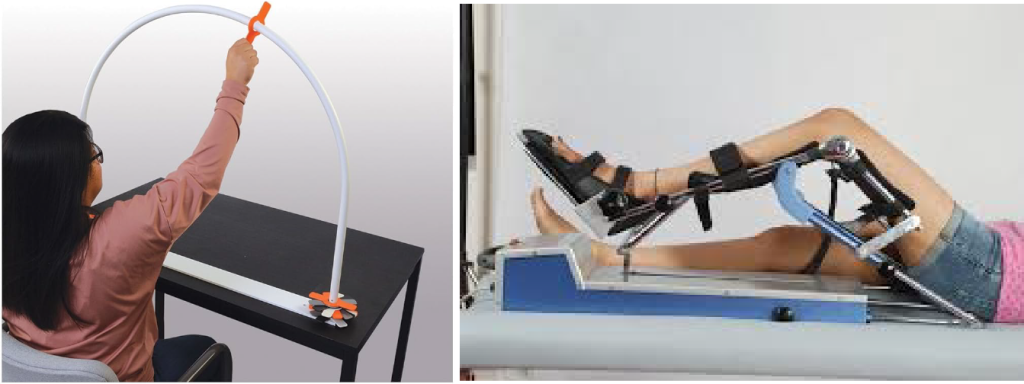Best Physiotherapy Center In Lokapur


Common Musculoskeletal and Sports Injuries Treated Through Physiotherapy
Physiotherapy plays a pivotal role in diagnosing, treating, and preventing a wide array of musculoskeletal and sports injuries. Among the most commonly treated conditions are:
Strains and Sprains:
Strains involve overstretching or tearing of muscles or tendons, often occurring in the hamstrings, lower back, or shoulders.
Sprains affect ligaments, typically around the ankles, knees, or wrists.
Tendonitis:
Inflammation of tendons, commonly seen in conditions such as Achilles tendonitis, tennis elbow (lateral epicondylitis), and rotator cuff tendonitis.
Ligamentous Injuries:
Tears or overstretching of ligaments, including anterior cruciate ligament (ACL) injuries and medial collateral ligament (MCL) injuries.
Fracture Rehabilitation:
Post-fracture recovery to restore strength, range of motion, and function.
Overuse Injuries:
Conditions like shin splints, plantar fasciitis, and stress fractures caused by repetitive strain.
Dislocations and Subluxations:
Rehabilitation following joint dislocations, particularly of the shoulder or patella.
Chronic Pain Syndromes:
Management of conditions like chronic low back pain or fibromyalgia.
Joint stiffness:
Frozen shoulder in diabeties patient, post traumatic stiffness
Physiotherapy Modalities for Treatment
A variety of modalities are employed to alleviate pain, reduce inflammation, promote healing, and restore function:
Heat Therapy:
Application of heat to relax muscles, improve blood circulation, and reduce stiffness.
Common tools: hot packs, paraffin baths, and infrared lamps.
Cold Therapy (Cryotherapy):
Use of ice packs or cooling agents to reduce inflammation, swelling, and pain, especially in acute injuries.
Electrical Stimulation:
Techniques like Transcutaneous Electrical Nerve Stimulation (TENS) or Interferential Current (IFC) therapy to alleviate pain and stimulate muscle activity.
Ultrasound Therapy:
Application of high-frequency sound waves to promote deep tissue healing and reduce inflammation.
Manual Therapy Techniques:
Includes soft tissue massage, myofascial release, and trigger point therapy.
Hydrotherapy:
Exercises performed in water to reduce weight-bearing stress on joints.
Kinesiology Taping:
Application of elastic therapeutic tape to support muscles and joints while allowing movement.
Techniques in Joint Mobility and Spine Physiotherapy
Joint mobility and spine physiotherapy are specialized areas aimed at restoring normal movement, alleviating pain, and improving function. Key techniques include:
Joint Mobilization:
Graded passive movements applied to synovial joints to improve mobility and relieve stiffness.
Often used for frozen shoulder, knee stiffness, or spinal facet joint restrictions.
Joint Manipulation:
High-velocity, low-amplitude thrust techniques to realign joints and relieve pain.
Effective in managing mechanical neck pain and lumbar spine dysfunction.
Therapeutic Exercises:
Strengthening Exercises: To improve muscle strength around injured joints.
Stretching Exercises: To enhance flexibility and range of motion.
Stabilization Exercises: Focused on core muscles to support the spine.
Postural Training:
Education and exercises to correct posture, particularly for conditions like kyphosis or scoliosis.
Traction Therapy:
Mechanical or manual traction to decompress spinal structures, often used for herniated discs.
Proprioceptive Neuromuscular Facilitation (PNF):
Stretching techniques that enhance neuromuscular coordination and flexibility.
Evidence-Based Practices in Physiotherapy
Research underscores the efficacy of physiotherapy in managing musculoskeletal and sports injuries:
Exercise Therapy: Studies consistently demonstrate that tailored exercise regimens improve outcomes in conditions like ACL injuries, low back pain, and rotator cuff tears.
Manual Therapy: Evidence supports its effectiveness in reducing pain and improving mobility in osteoarthritis and spinal conditions.
Ultrasound and Electrical Stimulation: While beneficial in some cases, their use should be adjunctive, complementing active rehabilitation strategies.
Education and Self-Management: Patient education on injury prevention, ergonomic practices, and home exercise programs is integral to long-term success.
Conclusion
Physiotherapy offers a comprehensive approach to treating musculoskeletal and sports injuries. By employing evidence-based modalities and techniques tailored to individual needs, physiotherapists can significantly enhance recovery, restore function, and prevent future injuries. At Shri Sai Hospital, our expertise in joint mobility and spine physiotherapy ensures the highest standard of care for every patient.